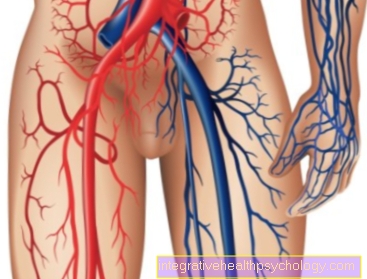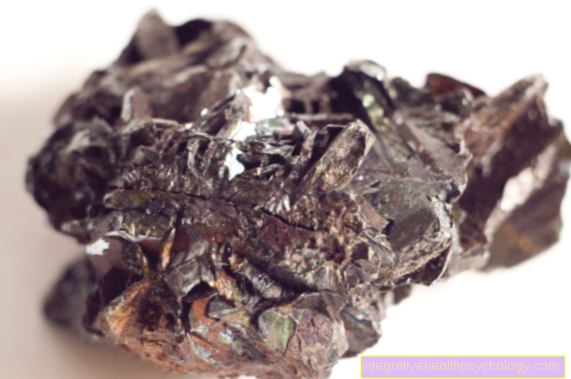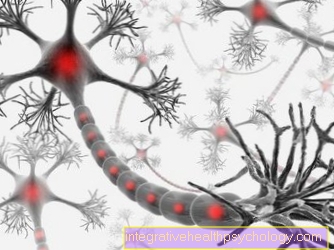Phospholipase
What is the phospholipase?
Phospholipase is an enzyme that splits off fatty acids from phospholipids. The more precise classification is made in four main groups. In addition to phospholipids, other lipophilic (fat-loving) substances can be broken down by the enzyme.
The enzyme belongs to the group of Hydrolases. This means that a molecule of water is consumed in the process of cleavage and is incorporated into the two resulting products. The enzymes can have a variety of consequences. Depending on the location and type, various signal paths or reactions can be initiated.

What types are there?
The enzyme phospholipase occurs in several forms within the body. The phospholipases are divided into four main groups:
- Phospholipase A
- Phospholipase B
- Phospholipase C
- Phospholipase D
Furthermore, the phospholipase A can be divided into a phospholipase A1 and a phospholipase A2. The classification is based on the localization at which the separation between phospholipid and fatty acid takes place. Phospholipase C and Phospholipase D actually belong to the group of phosphodiesterases.
Phospholipase A
Phospholipase A has different tasks depending on its location and type. While phospholipase A1 plays a subordinate role in humans, phospholipase A2 occurs much more frequently. This enzyme breaks the bond between fatty acids and the second carbon atom of glycerophospholipids.
In contrast, phospholipase A1 cleaves the bond between fatty acids and the first carbon atom of glycerophospholipids. The unity of fatty acids and glycerophospholipid occurs in humans in addition to food in the cell walls of all cells in the body.
On the one hand, the cleavage of the bond is essential for the degradation of the substances. In order to ensure sufficient absorption of substances into the body during digestion, phospholipase A2 is, among other things, in the digestive secretion of the pancreas. This secretion reaches the small intestine via the excretory ducts of the pancreas, where the enzyme breaks down fats into smaller components.
The components can then be absorbed through the mucous membrane. On the other hand, the split off fatty acid serves as the starting substance for the synthesis of tissue hormones, so-called prostaglandins, which take on a variety of tasks in the body. Thus, among other things, phospholipase A2 is used to regulate inflammation and temperature regulation of the body.
Certain drugs such as pain relievers (ASA) or glucocorticoids can inhibit the enzyme and can be used for therapeutic purposes.
Phospholipase B
Phospholipase B also splits off fatty acids from glycerophospholipids. In contrast to phospholipase A1 and A2, however, this can take place not only on one of the carbon atoms of the glycerophospholipid, but on the first and second carbon atoms. Thus, the phospholipase B combines the properties of both phospholipases of the main group A.
For this reason, it also has the same tasks. Phospholipase B is also found in the digestive secretion of the pancreas in order to make the digestion process even more effective.
In the intestine, the enzyme breaks down fats into smaller components. This allows them to be picked up. In addition, after splitting off, the enzyme also provides a fatty acid as a starting substance for the synthesis of prostaglandins. Phospholipase B is therefore also used to regulate inflammation and regulate temperature in the body. This can also be inhibited by various drugs.
Phospholipase C
There are several sub-forms of this enzyme which, however, do not differ in their effect. The difference lies in the type of receptor-mediated increase in their activity. Compared to phospholipases A and B, phospholipase C differs with regard to its location of cleavage of a bond.
While phospholipases A and B split off a fatty acid from the glycerophospholipid, the bond between the glycerol and the phosphate group is split by the phospholipase C on the third carbon atom. This releases a polar molecule that, due to its charge, can move freely in the cell's cytosol.
This is an essential part of the enzyme's job. The substrate that is converted by the enzyme is called phosphatidylinositol-4,5-bisphosphate. This is also a glycerophospholipid with a polar, charged and an apolar, uncharged part. For this reason, the molecule is able to sit in the plasma membrane of a body cell.
As soon as a special stimulus, receptor-mediated, increases the activity of phospholipase C from outside the cell, the substrate is converted. The resulting polar inositol triphosphate (IP3) and apolar diacylglycerol (DAG) serve the cell as "Second messenger“Within the framework of the transmission of stimuli within the cell.
Phospholipase D
Phospholipase D is widespread. Like phospholipase C, it belongs to the group of phosphodiesterases. They can also be divided into the two isoforms phospholipase D1 and phospholipase D2. Depending on the isoform, they occur with different frequencies in the compartments and organelles of the cell.
Depending on the location, they take on different tasks. The substrate of the enzyme is the so-called phosphatidylcholine or lecithin. This is part of all cell membranes and, with its polar and non-polar components, makes a large contribution to the function of the cell membrane.
In humans, phospholipase D also plays an important role in many processes within the cells. Among other things, it is responsible for signal transmission, the movement of cells and the organization of the cell skeleton. These effects are mediated by the splitting of phosphatidylcholine into its components choline and phosphatidic acid.
Phospholipase D is regulated in a variety of ways. For example, hormones, neurotransmitters or fats can influence the activity. Phospholipase plays a role in some diseases. However, it is not always clear what exactly this role looks like. In some neurodegenerative diseases such as Alzheimer's disease, an involvement of phospholipase D is discussed.
Where are they made?
Phospholipase precursors are synthesized by the ribosomes of the cells. These sit on the cell organelle, the endoplasmic reticulum, of all cells in the body. When active, they release a chain of amino acids, from which the finished enzyme is later created, into the endoplasmic reticulum.
Here, maturation takes place to the finished enzyme. For example, some amino acids that only assume regulatory functions are already removed again. From there, the amino acid chains are transported by special transport vesicles to the Golgi cell organelle. Here, maturation takes place again to the finished enzyme.
There is also a division into further transport vesicles, which transport the enzyme to its destination in the cells. If a phospholipase is not to act in a cell organelle, it is not initially introduced into the endoplasmic reticulum. In this case the amino acid chain is formed directly in the cytoplasm by the ribosomes.
What is a phospholipase inhibitor?
Phospholipase inhibitors are molecules that can reduce the activity of phospholipases. These molecules are not made by the body, but are artificially synthesized. The aim of the artificial synthesis of the phospholipase inhibitors is a therapeutic use in the context of inflammatory reactions.
Since arachidonic acid, a cleavage product of phospholipases, is the starting product for the formation of tissue hormones, inhibiting the phospholipase can reduce the effect of the tissue hormones. In general, the tissue hormones ensure an increase in inflammatory reactions. Due to the lower formation of arachidonic acid, less starting material is available for the formation of tissue hormones. The use of phospholipase inhibitors is thus intended to alleviate an inflammatory reaction.





























